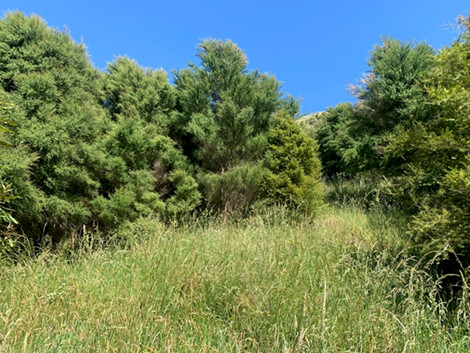Seed islands to support the regeneration of Whāngārā farms retired land blocks
Whāngārā Farms are thrilled to share the progress that our teams, partners and communities are making as we transition our retired and unproductive land into native bush.
The organisation is continuing our native planting projects, breathing new life into the ecosystems that make up our whenua on Whāngārā Farms.
Through this initiative over time blocks throughout the Farms will reap the benefits of new ‘seed islands’ that will have fencing erected and weed and pest eradication programmes undertaken. Establishing seed islands across the Whāngārā landscapes is the method being utilised as the start point for the large-scale establishment of native forest, supporting our aspirations for a thriving taiao into the future.
Whāngārā Farms aims to plant intensively managed groves of initially native shrubs and plants leading to the re-establishment of the native tree species that once were in abundance. This is to provide greater biodiversity (the key to sustainability). This will provide a patchwork of inter-connected native bush remnants allowing wind- and bird-dispersed seed across the wider regenerating landscape, such as at the 400/ha retired block at Puatai. Basically, setting nature up to do its thing! The benefit of using a seed island approach is that they support native plants to regenerate, while also fostering the protection and resilience of native bird and animal species recreating their natural habitats.
Tairāwhiti has experienced massive historic losses of ecosystems and biodiversity, with just 7% of the Tairāwhiti district being classified as native bush today. Returning unproductive land throughout the Farms into ngahere (native bush) is part of the organisations wider regeneration plans, with hopes to restabilise the retired steep, unproductive and erosion-prone land and wetlands. Wetlands that are some of the most significant in Aotearoa.
The species being planted in the seed islands are a combination of fast and slow growing, robust natives. We will begin with the species that are still prominent as they have survived to date everything that they have been exposed to. They will be an important source of seed for the future regeneration of these species in the area, as well as a potential feeding and breeding area for native fauna.
In addition to the seed islands, the teams will also work to remove pests, to help get sediment effected back into production and/or native regeneration, lift water quality and restore the mauri of the whenua and waterways, and; have begun planning for native tree planting in 2025, with 2000 trees planned in partnership with Trees That Count as part of our ongoing project. Following on from successful native planting with Civil Assist, 7,900 trees have been received to plant already to also maintain and protect the erosion-prone retired whenua.
Make sure to follow our journey of native tree planting, and land sustainability activities as we work towards maintaining and enhancing the wellbeing of our whenua for future generations.









